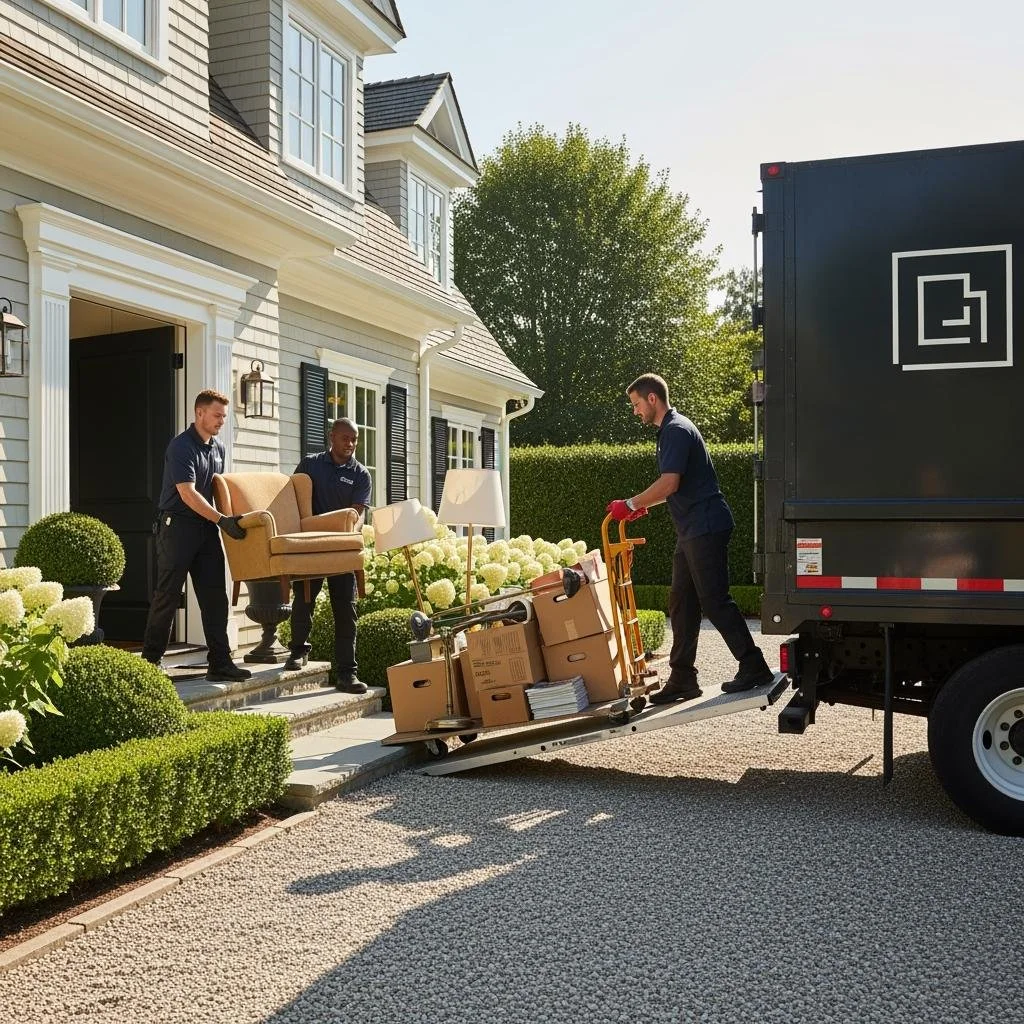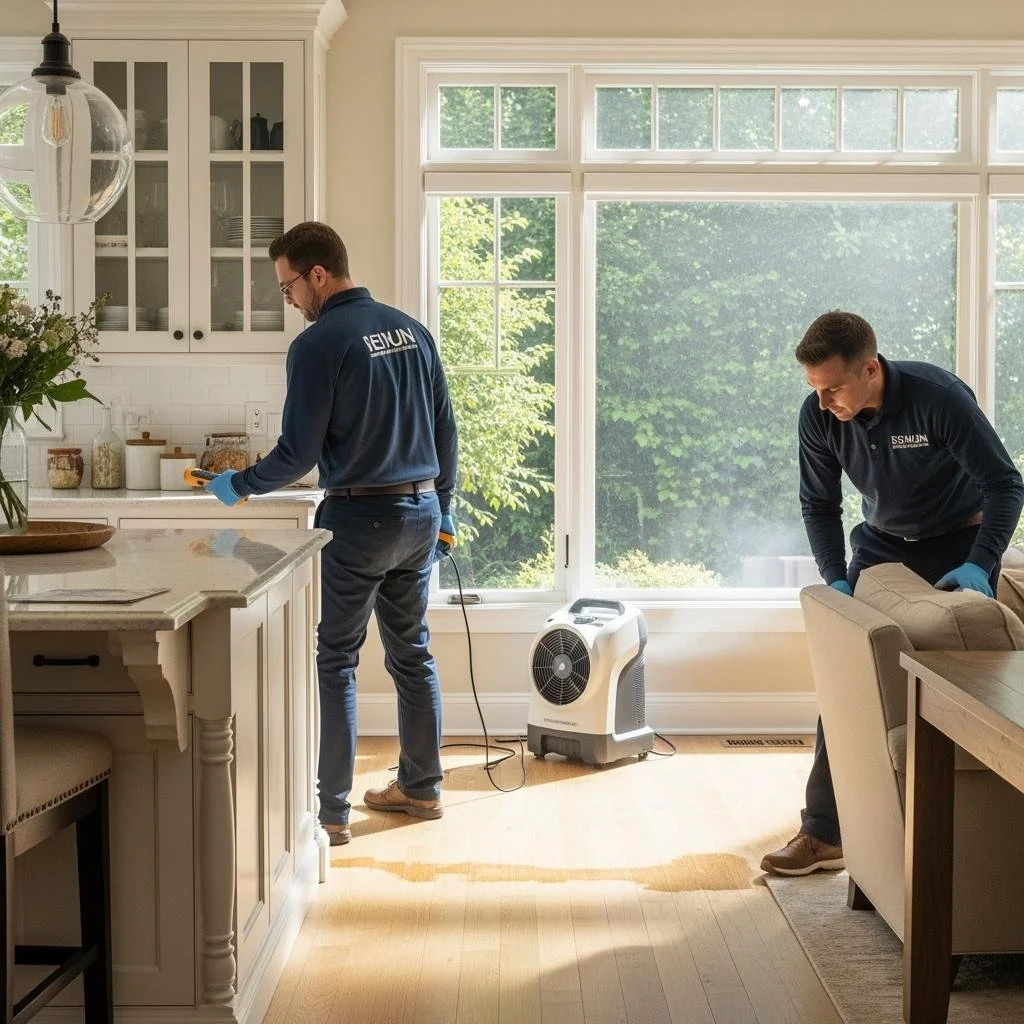What You Need To Know Before Scheduling A Junk Pick-up Service
Decluttering feels amazing—until you’re staring down a garage of mystery boxes, a lumpy sofa that’s outstayed its welcome, and a calendar that’s already full. Calling a professional junk pick up service can turn that chaos into curb-side calm, sparing you multiple trips, heavy lifting, and disposal guesswork. With a bit of planning, you’ll cut costs, avoid day-of surprises, and make sure your stuff is handled responsibly from doorstep to destination.
In this article, we’ll walk you through everything you need to know before scheduling a junk removal appointment. From understanding what items are accepted to comparing pricing models, prepping your space, and choosing a sustainable provider, this comprehensive guide will help you make informed decisions and ensure a smooth, efficient experience. Whether you're cleaning out a single room or managing a large estate, the right planning can turn your cluttered chaos into clean, organized calm.
No. 1
Know what they take—and what they don’t
Most providers will remove common household cast-offs: furniture, mattresses, appliances, grills, yard waste, electronics, and general debris. Fewer will accept renovation rubble, hot tubs, pianos, or anything that requires special equipment or disassembly. Nearly all draw a hard line on hazardous materials—paint, solvents, pesticides, automotive fluids, propane tanks, and certain batteries—which demand specialized disposal.
Before you book, request the company’s current “yes/no” list.
For borderline items (refrigerators with refrigerant, oversized TVs, exercise equipment, or play sets), ask whether prep is required—defrosting, disconnecting, draining fuel, or partial disassembly. A five-minute call can save a failed appointment.
Smart move: Text photos of unusual items during the quote. Visual confirmation leads to accurate pricing and fewer day-of refusals.
No. 2
Demystify pricing so the quote matches the bill
Junk removal pricing typically follows one of three models:
Volume-based: You pay by how much of the truck you fill (eighth, quarter, half, three-quarters, full).
Item-based: Set prices for a sofa, mattress, refrigerator, etc.
Time and labor: An hourly rate for complex clean-outs or on-site sorting.
To compare apples to apples, clarify:
What’s included: loading, transport, disposal fees, basic labor, and sweep-up.
What costs extra: stairs or long carries, demolition/disassembly, heavy items, weekend/same-day service, or after-hours pickups.
How quotes are finalized: on-site estimates versus photo estimates, and the tolerance for load changes.
Payment: accepted methods, deposits, and when you’re charged.
Two companies can look identical on headline price but differ dramatically on surcharges, professionalism, and care for your property. Ask how they protect floors, walls, and doorframes—and whether they carry the right insurance.
No. 3
Prep to save time—and money
A bit of pre-work can shave both minutes and dollars:
Stage items together: The closer to your driveway or entry, the faster the load. Clear hallways, roll up rugs, and prop doors for quick access.
Sort by destination: Keep donation-ready items (clean, functional) separate from true junk; recycling and donations can reduce disposal fees.
Disassemble selectively: Remove table legs, flatten boxes, and break down bed frames. Keep hardware in a taped bag.
Unplug and drain: Defrost freezers, disconnect washers, and empty gas-powered tools to prevent leaks.
Protect your privacy: Shred papers, wipe hard drives, and remove SIM cards from electronics.
Prefer a hands-off approach? Many teams offer full-service “point and it’s gone.” It costs more, but the convenience can be worth it—especially on tight timelines.
Houzz
Make your home project a reality. Find inspiration, products, and the pros to make it happen - all in one place.
No. 4
Choose a provider that diverts, not just dumps
Sustainable removal isn’t just good optics; it can be good economics.
Ask how the company sorts for donation and recycling, which local partners they use, and whether they provide donation receipts. Well-established haulers maintain relationships with charities, refurbishers, and recycling facilities—keeping reusable items out of landfills and sometimes reducing your disposal costs.
For anything the hauler cannot legally accept, check your municipality’s guidelines or consult a high-authority source on safe handling.
For example, the U.S. Environmental Protection Agency explains best practices for household hazardous waste and lists common items requiring special care. Building disposal into your plan—from paint to pesticides—prevents last-minute scrambling.
No. 5
Verify credentials, insurance, and professionalism
You’re inviting a crew into your space. Vet them like you would any contractor:
Insurance: Request proof of general liability and workers’ compensation.
Licensing and permits: Requirements vary by city or county; reputable firms know the rules.
Equipment and appearance: Clean trucks, uniforms, safety gear, and floor/wall protection signal professional standards.
Team size and experience: A larger, well-coordinated crew works faster, which matters for big jobs.
Reputation: Scan reviews for themes—punctuality, communication, care in tight spaces, and accuracy of estimates.
If your building needs a certificate of insurance (COI) or has elevator reservations, confirm the provider can supply documents and accommodate time windows.
No. 6
Plan the logistics so “pickup day” runs smoothly
A little choreography avoids stress:
Access and parking: Reserve curb space, notify your HOA, and confirm loading dock hours if applicable.
Elevators and stairs: Book elevator windows, and tell the crew about stair-only access or tight turns.
Pets and kids: Keep them safely away from open doors and pathways.
Walk-throughs: Do a quick tour with the crew lead before loading begins to prioritize items, and a final lap after to confirm nothing was missed.
Paperwork and receipts: Confirm final volume or item counts, request donation receipts, and keep a record of the invoice for taxes or reimbursement.
No. 7
Match the service to the job
Not every project requires the same approach:
Single items: A sofa or mattress pickup may qualify for a lower minimum if scheduled alongside nearby jobs—ask about “route-based” pricing.
Room or garage clean-outs: Consider a two-phase plan: donations first, landfill second. Freeing space early speeds the final sweep.
Estate or hoarding situations: Look for providers with specialized training, protective equipment, and sensitivity to family dynamics.
Post-renovation debris: Verify acceptance of construction waste and whether a debris bag or temporary dumpster would be more cost-effective.
When you’re on a deadline—moving, listing a home, or prepping for contractors—book as early as possible. If you need speed, ask about standby lists and same-day windows.
No. 8
Safety, damages, and your peace of mind
Accidents are rare with a skilled crew, but safeguards matter:
Pathway protection: Request floor runners, corner guards, and door jamb protectors for tight spaces.
Load management: Pros use lifting straps and dollies; they won’t “muscle” items at the expense of safety.
Weather plans: Rain happens—confirm how they’ll protect items and your floors.
Claims process: Ask how damages are reported and resolved, and how quickly you can expect updates.
Good companies will walk you through their protocol before the first box moves.
No. 9
Timing and seasonality: when to schedule
Spring and summer are peak seasons for moves and clean-outs, so appointments fill fast. If you’re flexible, midweek and mid-month slots are often easier to snag.
When aligning with other services—house cleaning, painters, carpet installers—schedule removal before the refresh so crews aren’t working around piles. For relocations, aim to schedule junk pick up at least a week ahead; for estate or multi-space projects, consider holding two windows a few days apart to handle donations and hold-outs without stress.
No. 10
A quick comparison checklist
Use this side-by-side list to pick the right provider:
Accepts all your items—or has clear referrals for what they don’t.
Transparent pricing, with surcharges disclosed in advance.
Donation and recycling partners named, with receipts available.
Proof of insurance and any required licenses on request.
Professional communication: confirmations, ETA texts, and a named lead on arrival.
Clear pathways, protection for floors/walls, and a sweep-up before departure.
Accurate, respectful handling of special requests or building rules.
Takeaways
A reliable junk pick-up service should simplify your life—not complicate it. By confirming what’s included, prepping your space, verifying credentials, and choosing a provider committed to sustainability, you’ll ensure a smooth experience from start to finish.
The right crew will handle your clutter with care, keep reusable items in circulation, and leave your space cleaner, clearer, and more functional. Whether you’re downsizing, renovating, or just reclaiming your garage, a well-planned junk removal can make all the difference.
So the next time you’re ready to declutter, remember: you’re not just clearing space—you’re making room for peace of mind and a more sustainable future.
This post is sponsored.
Looking for Home resources?
Looking to enhance your living space and create a sanctuary that supports your well-being? Explore our home partners who offer a wide range of resources to elevate your home environment.































